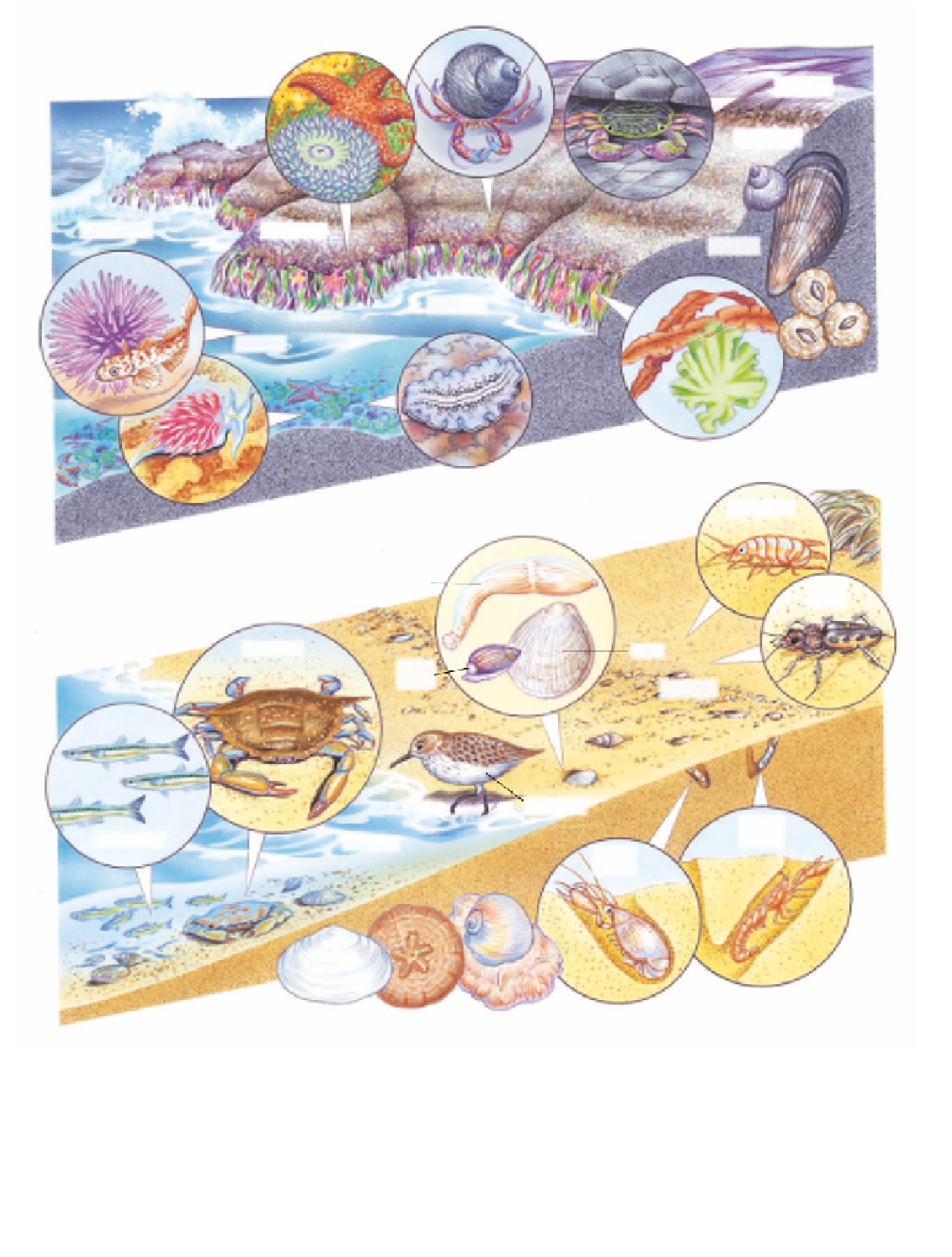Environmental Engineering Reference
In-Depth Information
Rocky Shore Beach
Sea star
Hermit crab
Shore crab
High tide
Periwinkle
Anemone
Sea urchin
Mussel
Low tide
Sculpin
Barnacles
Sea lettuce
Kelp
Monterey flatworm
Beach flea
Nudibranch
Peanut worm
Tiger
beetle
Barrier Beach
Blue crab
Clam
Dwarf
olive
High tide
Sandpiper
Ghost
shrimp
Silversides
Low tide
Mole
shrimp
Moon snail
White sand macoma
Sand dollar
Figure 5-29
Natural capital:
living between the tides. Some organisms with specialized niches found in
various zones on rocky shore beaches (top) and barrier or sandy beaches (bottom). Organisms are not
drawn to scale.
The biodiversity of coral reefs can be reduced by
natural disturbances such as severe storms, freshwater
floods, and invasions of predatory fish. Throughout
their very long geologic history, coral reefs have been
able to adapt to such natural environmental
changes. Today the biggest threats to the biodi-
versity of the world's coral reefs come from hu-
man activities listed in Figure 5-32 (p. 103).











